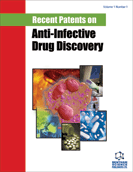Abstract
Background: Vitamin D deficiency and abnormal bone mineral density (BMD) have been reported in HIV patients. We aimed to find out the effects of antiretroviral therapy (ART) on serum vitamin D, parathyroid hormone (PTH) levels, BMD changes and fragility fracture rates in HIV patients.
Methods: We collected information about baseline demography, risk factors for fracture, viral load (VL), CD4 count, serum 25-OH vitamin D (n=357), PTH (n=277), phosphate, ionised calcium, creatinine and BMD of spine and hip by DEXA scan (hologic, n=142). Statistical analysis used one-way ANOVA followed by Dunn’s multiple comparison tests.
Results Table 1: Total 357 patients, mean age 41.1 (+/- 11.9) years, 249 (66%) black African, 197(52%) females, baseline CD4 count 451 (+/- 184) cells/dl, VL 1.4 log (+/- 1.2) copies/ml, duration of ART 52 (+/- 35) months were included in the analysis. Serum vitamin D was 15.3 (+/- 11.0) ng/ml, PTH (intact) 5.5 (+/- 3.9) pmol/l, corrected calcium 2.13 (+/- 0.9), phosphate 1.0 (+/- 0.2) and creatinine was 73.4 (+/- 21.1) mmol/l. Ninety four (66%) patients had abnormal BMD (T-score of spine or hip or both ≤ 1.0). Vitamin D levels were deficient (< 30 ng/ml) in 297 (78.7%) and PTH was high (>4.1 pmol/l) in 177 (64.8%) patients. Of 91 (30.9%) patients who had vitamin D levels below 10.0 ng/mL, PTH was high in 70 (n=91, 76.9%) and abnormal BMD in 50 (n=61, 75.4%) patients. Thirteen patients (3.2%) had possible fragility fractures. Tenofovir (TDF) users had higher PTH (P=0.002) and lower BMD of spine (0.01) and hip (0.002) and efavirenz (EFV) users had lower vitamin D (0.01) levels. On multivariate analysis including all significant variables, female sex (OR 1.5 CI 1.3-5.9), age over 40 years (OR 1.2 CI 0.9-5.1) and TDF use (OR 1.9 CI 1.6-6.9) were associated with abnormal BMD of hip but not spine.
Conclusion: Female patients over 40 years old on tenofovir containing regimens may have increased risk of BMD loss from hip. Whether Vitamin D replacement will prevent further bone loss needs further work.
Keywords: Antiretroviral therapy, bone mineral density, efavirenz, HIV, recent patent drugs, tenofovir, vitamin D.
 54
54





















